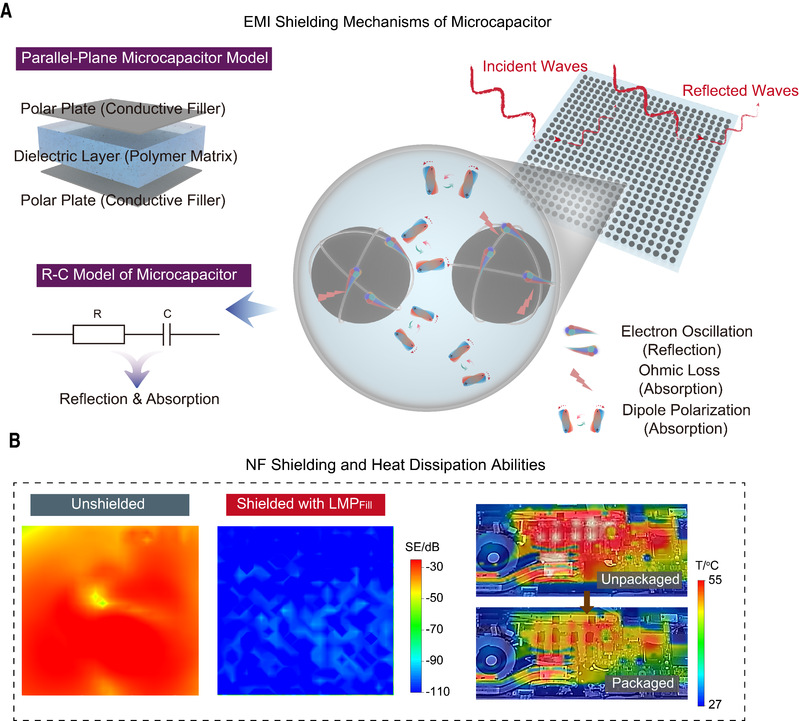In September 2024, the research team led by Professors Zhong-Zhen Yu and Hao-Bin Zhang from College of Materials Science and Engineering and State Key Laboratory of Organic-Inorganic Composites at Beijing University of Chemical Technology published their latest research findings in Science titled Insulating electromagnetic-shielding silicone compound enables direct potting electronics. This study introduces for the first time an insulating electromagnetic shielding theory model, breaking the traditional perception that electrical insulating materials cannot possess high electromagnetic shielding performance, making the design and application of insulating electromagnetic shielding polymer composite materials possible.

Currently, electromagnetic interference (EMI) shielding materials are mostly electrically conductive, and their shielding mechanisms primarily involve the interactions between free electrons and electromagnetic waves. However, when using conductive EMI shielding materials for packaging highly integrated electronic devices, short-circuit issues can easily arise, requiring complex insulating designs which hinders the rapid development of miniaturized electronic devices. Therefore, there is an urgent need to develop efficient EMI shielding materials with inherent insulating properties. However, due to the lack of guidance from insulating EMI shielding theory, the design and preparation of insulating EMI shielding materials face enormous challenges.
Based on the analysis of the deviation between experimental and theoretical values of EMI shielding performance for polymer composite materials in literature, this study found that, in addition to the continuous conductive network within the composite materials, the micro-capacitor structure composed of discrete conductive fillers and the polymer matrix also contributes to the EMI shielding performance. Derived from dipole radiation and plane wave propagation theory, an insulating EMI shielding theory model based on micro-capacitors was established for the first time, revealing the interaction mechanism between insulating composites and electromagnetic waves, providing theoretical guidance for the design of insulating EMI shielding materials. Guided by this model, the research team proposed non-percolation densification and dielectric optimization strategies, achieving the integration of superior electrical insulation and excellent EMI shielding performance in the silicone rubber/liquid metal composite materials. The composite materials can be used for direct potting of electronic devices, effectively solving electromagnetic compatibility and thermal management issues without short-circuit risk. Compared to current electromagnetic compatibility solutions, this material simplifies the packaging structure and process, providing a new route to address electromagnetic compatibility and efficient heat dissipation in highly integrated electronic packaging.

Figure (A) insulating EMI shielding theory model based on micro-capacitors; (B) near-field shielding and thermal dissipation performance of the insulating EMI shielding composite.
The first author of this article is Xinfeng Zhou, a PhD candidate from the College of Materials Science and Engineering. The corresponding author is Professor Hao-Bin Zhang from the College of Materials Science and Engineering. Lecturer Peng Min, PhD candidate Yue Liu, PhD candidate Meng Jin, and Professor Zhong-Zhen Yu are the co-authors of this article.


